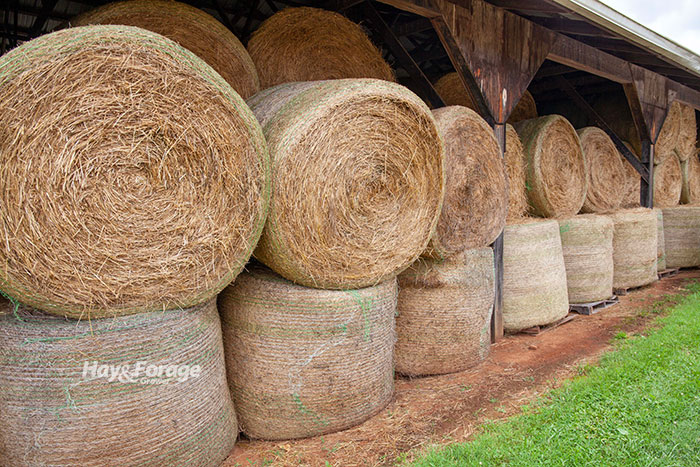
Cattle, sheep, goats, horses, or camels — it doesn’t matter. If you feed livestock, the chances are good that you’ve got forage in storage or lining fence rows. As the new year begins, one practice that will almost always pay dividends is to take an accurate account of forage inventory, which includes bales and silage.
A forage inventory — accomplished with purpose — helps to assess if enough forage will be available to get to the next spring’s first harvest or the onset of green pastures. It is also a requirement made by many lenders when balance sheet calculations are made.
Here’s a basic review of what needs to be done.
Baled hay:
In addition to a simple bale count, also determine the weight per bale for each type of hay made (and perhaps cutting). Bale weights must be accurate. If a "guess" is off by 100 or more pounds per large bale, this can result in a significant error over a season's worth of harvested forage. Also be sure to account for moisture if feed needs are being determined on a dry matter basis.
When determining if future hay needs will be met based on current inventory and livestock nutrient requirements, don’t forget to consider waste. This will be tonnage not consumed by the animals.
Silage:
There are two types of silage inventory estimates: inaccurate and close to accurate. An inaccurate estimate is easy and can be done from the comfort of your living room. A close to accurate estimate takes some time and effort.
Silage bales and, to a lesser degree, silo bags lend themselves to relatively accurate estimates. In the case of baleage, an accurate weight, bale count, and moisture are all that is needed. For bags, which tend to have less variation front to back than other types of silos, there are charts and spreadsheets that can be used. Note that unfilled bag ends need to be accounted for, as do feeding and handling losses.
Horizontal bunker silos or silage piles have many inherent variables when it comes to accurately estimating stored forage. Density (pounds per cubic foot), length, width, dome height, slope, and ramp length all differ between storage units.
There are many spreadsheets that can help with this task, but it’s up to you to safely obtain accurate dimensions. It’s good to get this job done before weather conditions totally disintegrate. Further, given the size of some silage piles and bunkers, a misrepresentation of actual density can result in an inventory estimate that is significantly off the mark.
In recent years, some nutritionists and consultants have started to use drones and specialized software to estimate the forage remaining in bunker silos and silage piles.
Tower silos have the advantage of a fixed diameter. Still, there is the realization that more forage exists in the bottom 10 feet of a silo than in the top 10 feet. If some silage has already been fed from a tower silo (top or bottom), it needs to be accounted for using a silo chart.
Forage quality:
Once a forage census is complete, the next chore is to match forage inventories with livestock needs. Inventory livestock by age and/or feed requirements. Forage quality plays a large role in feedout rates. For this reason, forages need to be tested so that reasonable ration inclusion rates can be calculated. For example, Glenn Selk, Oklahoma State University emeritus extension animal scientist, notes that a 1,250-pound, heavier-milking beef cow needs about 34% more energy a year than an 1,100-pound, moderate-milking cow.
Finally, begin multiplying animal numbers by days and forage needs, then compare total forage needs with forage inventories. Keep straight whether calculations are being made on an as-fed or dry matter basis.
Most university extension services have a variety of paper and computer-based worksheets to help navigate through this entire process. Yes, it can be mundane, but the outcome of a thorough forage inventory and winter-feed management plan can pay big dividends. Now is the time to get it done.

